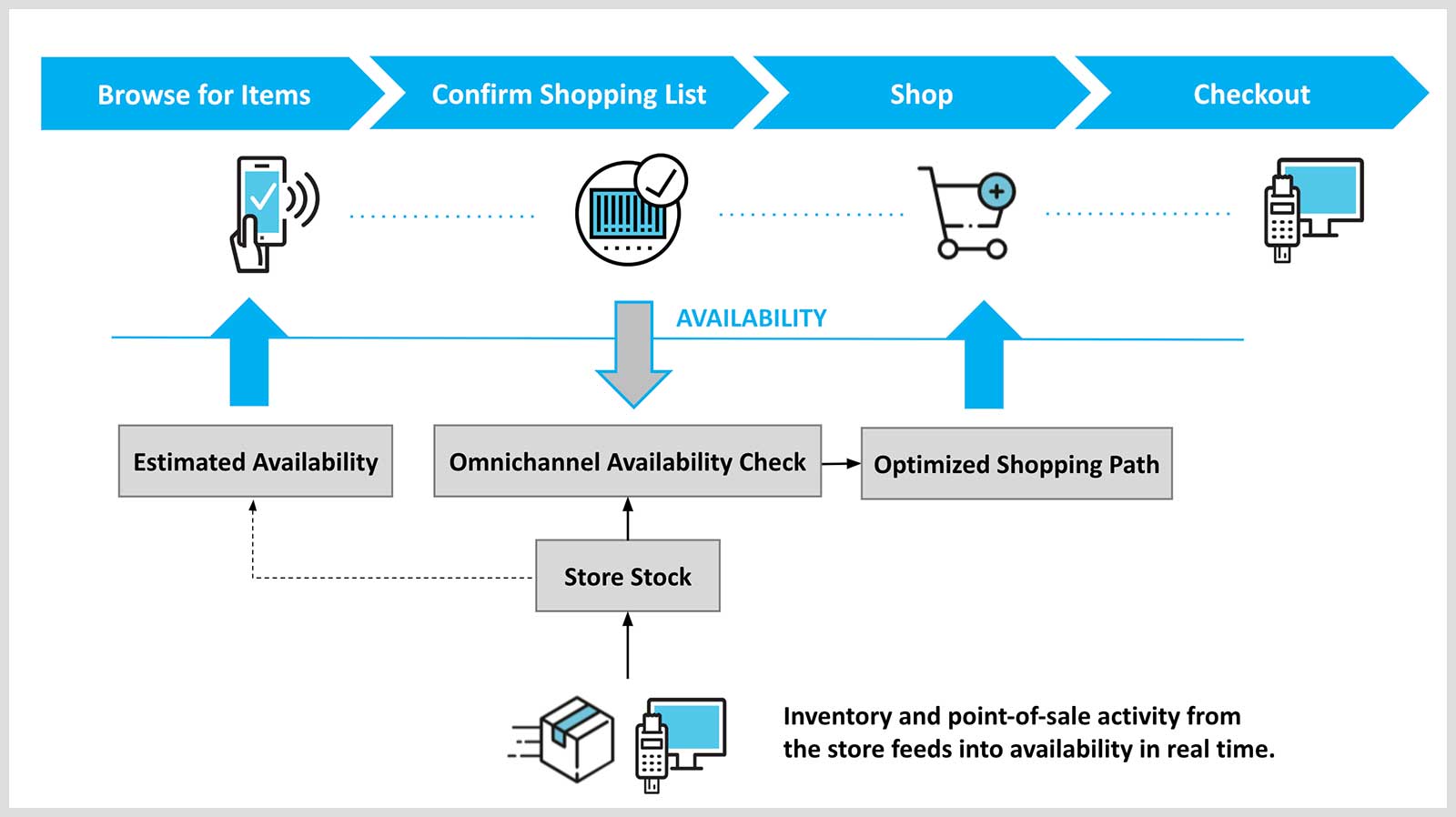
DELIVERING ON NEW SHOPPING EXPECTATIONS
April 23, 2020
In a future when shoppers are likely to be uneasy about going into any store, only the tech-forward, customer-focused retailers will survive.
The world is a different place than it was just a couple of months ago. As companies hustle to maintain their business while responding to the new normal, many are considering what the long-term impact of coronavirus will be on the retail industry at large.
The coronavirus pandemic has pushed retail quickly into new directions with social distancing. According to research and consulting firm Technomic, 52 percent of consumers are avoiding crowds and 32 percent are leaving their homes less often because of coronavirus. With these new behaviors, brands across the globe are worrying about how COVID-19 will impact how (and if) consumers will come back to stores.
The News is Not All Bad
Some retailers are seeing significant traffic and sales bumps as shoppers stock up or adjust their habits to limit the number of trips they make to public spaces. And Criteo’s Coronavirus shopping trends show ecommerce and select product categories such as cleaning supplies, home office technology, pet supplies, gaming equipment, outdoor furniture, and exercise equipment are experiencing dramatic sales spikes.
Moreover, Digital Commerce 360’s 2020 omnichannel survey of 1,000 online shoppers revealed that 78 percent of online shoppers are active with the following omnichannel behaviors:
- 54 percent of online shoppers checked inventory at nearby stores
- 41 percent of online shoppers took advantage of BOPIS
- 24 percent ordered online for same-day delivery from a web-only retailer
Amid the coronavirus pandemic, customers are exerting more control over how, when, and where their orders are fulfilled. So, what does this mean for retailers? It further reinforces that omnichannel is no longer optional for stores. When it comes to any good omnichannel strategy, you’ll find inventory and real-time inventory visibility at its core.
Here are some ways we are leveraging real-time inventory management to help retailers manage the new dynamics of omnichannel retail, now and in the years to come, by the coronavirus aftermath.
BOPIS and Curbside Pickup Accelerate
Buy Online Pickup In-Store (BOPIS) and curbside pickup have become increasingly popular due to COVID-19 and may present a potential survival strategy for retailers to adopt as coronavirus concerns linger.
Many of our omnichannel customers such as Kirkland’s, Floor & Decor, MEC, and Office Depot have all already implemented BOPIS to varying degrees, and some with added business customizations. In addition to flexing these capabilities during the pandemic, these retailers are far better positioned to respond as shoppers gradually adjust to new buying habits moving forward. Furthermore, through Veras CheckOut point-of-sale, these retailers gain real-time visibility of POS purchases that make online merchandise availability all the more accurate.
According to Adobe, BOPIS saw a 62 percent year-over-year increase from February 24, 2019 to March 21, 2020. In addition to limiting the time consumers spend in public areas, BOPIS provides a more immediate alternative when home delivery methods are booked to capacity.
As consumers are drawn to the convenience, safety, and speed of BOPIS, it is essential to provide store staff with the necessary tools to successfully execute.
 Veras Locate does that by giving the store quick visibility to inventory position for picking the BOPIS order, as well as audible and visual alerts that let associates know they are falling behind to better prioritize orders and ensure they’re ready for pickup.
Veras Locate does that by giving the store quick visibility to inventory position for picking the BOPIS order, as well as audible and visual alerts that let associates know they are falling behind to better prioritize orders and ensure they’re ready for pickup.
Even with BOPIS adoption increasing over recent years, the necessity of using it now may cause permanent adoption to peak and stay in retail.
Ship from Store or from Warehouse
When store hours are limited, or worse, closed when you’re not considered an essential retailer during COVID-19 stay-at-home orders, retailers can use ship from store to achieve these fundamental retail goals to maximize the impact of your stores:
- Improve customer experience with low-cost, high-speed delivery
- Efficient inventory management and responsive ecommerce fulfillment centers
- Increase revenue and profit from more conversions
Ship from store provides low-cost, high-speed delivery by distributing the capabilities of warehouses closer to shoppers. By optimizing the picking process and leveraging staff at every store (or select stores) retailers can create responsive ecommerce fulfillment centers.
Jewelry retailer Kendra Scott provides a nice industry example where they had plans to become truly omnichannel and offer shipping from stores. However, the retailer was still almost a year out from execution. With a ship from store strategy, they were able to accelerate that in just a few weeks by turning their 108 closed stores into mini-fulfillment centers. The retailer is now better able to keep up with growth of its online sales while allowing their employees to practice social distancing.
A ship-from-store fulfillment strategy may also boost revenue resulting from several retail advantages the approach provides.
More sales. Ship from store exposes on-the-shelf, brick-and-mortar inventory to a larger online market. A camping tent stored in the stockroom of a Springfield, Illinois sporting goods store at the end of November can still be sold to an online shopper in San Antonio, Texas, where the average temperature that month hovers in the mid-70s.
Efficient inventory management. Ship from store requires better inventory management. If you miscount inventory in the store, you could easily disappoint an online customer. Improved inventory management can lead to faster turns and better purchasing decisions.
Move more inventory. Rather than warehousing ecommerce inventory in a location that is isolated from stores and store inventory isolated from online markets, ship from store shares inventory across a retailer’s locations.
 Veras Locate’s lightweight, easy-to-deploy architecture and efficient order picking allows retailers to meet these challenges without breaking the budget on costly, overly complex warehouse management systems. Veras Locate addresses multiple business cases to make the best use of your resources across stores, warehouses, and offices.
Veras Locate’s lightweight, easy-to-deploy architecture and efficient order picking allows retailers to meet these challenges without breaking the budget on costly, overly complex warehouse management systems. Veras Locate addresses multiple business cases to make the best use of your resources across stores, warehouses, and offices.
Provide Shoppers with Inventory Visibility
BOPIS and home delivery provides safer, and sometimes more convenient options, to get products in hand to the customer. But as today’s supply chains are constrained and delivery times range anywhere from two days to two weeks, shoppers are taking to the stores to physically search for the items they need.
What do shoppers ask themselves before entering the store? It really comes down to the following:
- Is the item in stock?
- Where is it available?
- What is the most convenient location?
- How fast can I get it?
Now imagine allowing shoppers to use smartphones to know the availability and location of merchandise before heading to stores (and while in stores). This not only will speed purchases but could be a potential customer-experience game changer during these chaotic times.
Veras Retail can help retailers achieve much of this today through real-time connectivity from the POS, ecommerce, and checks against real-time inventory.

Ultimately, if you lack real-time connectivity from your point-of-sale to your ecommerce business, you’re either going to disappoint the customers by accepting orders that can’t be fulfilled, or lose out on sales when stock is actually available by creating buffers that err too far on the side of caution.
What this all makes clear is how essential the full integration of stores and omnichannel technology has become to retailers. While there are many unknowns, we do know that consumer shopping habits will change, and retailers need to adapt while remaining financially viable.
For retailers, focusing on customer needs and building loyalty through ideal customer experiences may never be as important as it is right now. And in a future when shoppers are likely to be uneasy about going into any store, only the tech-forward, customer-focused retailers will survive.
